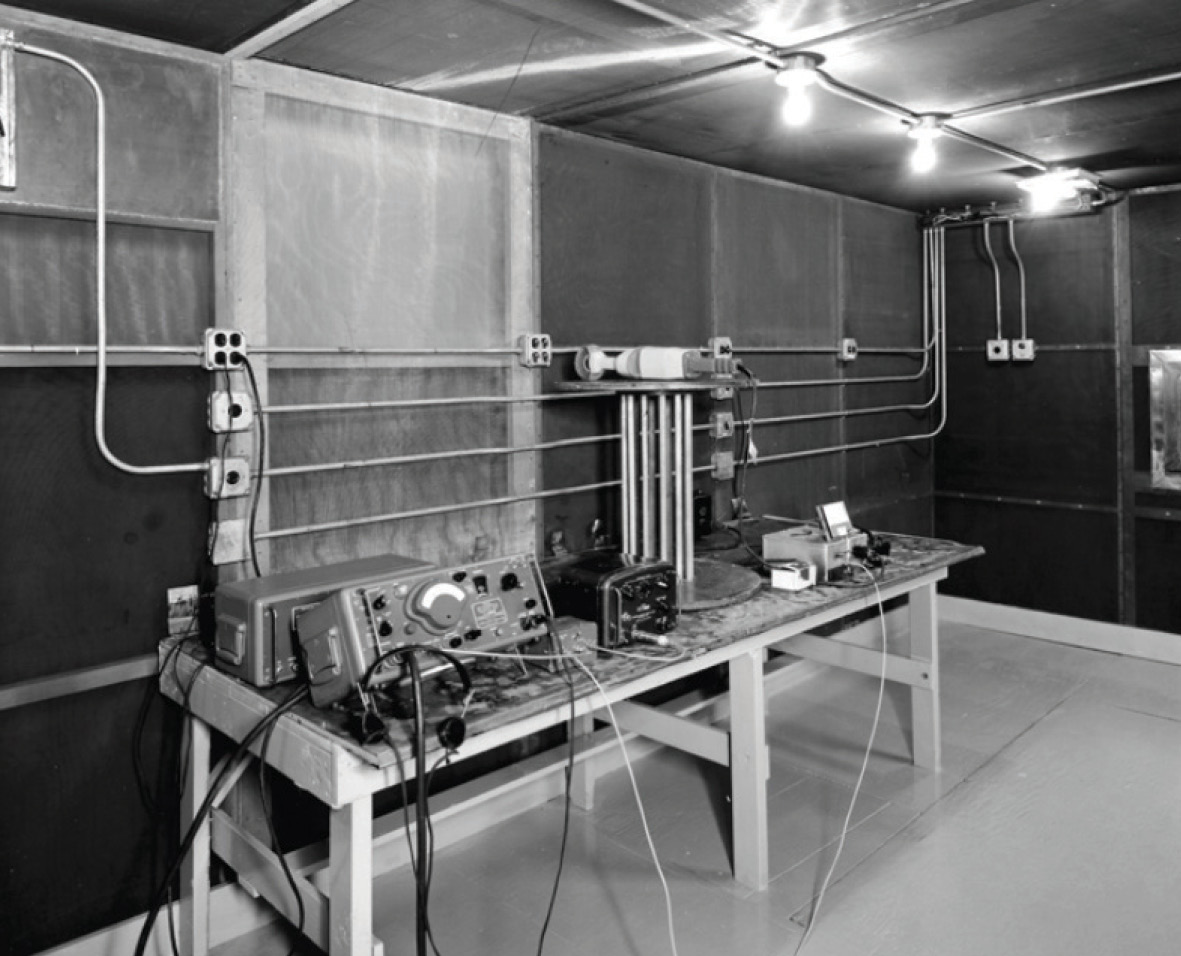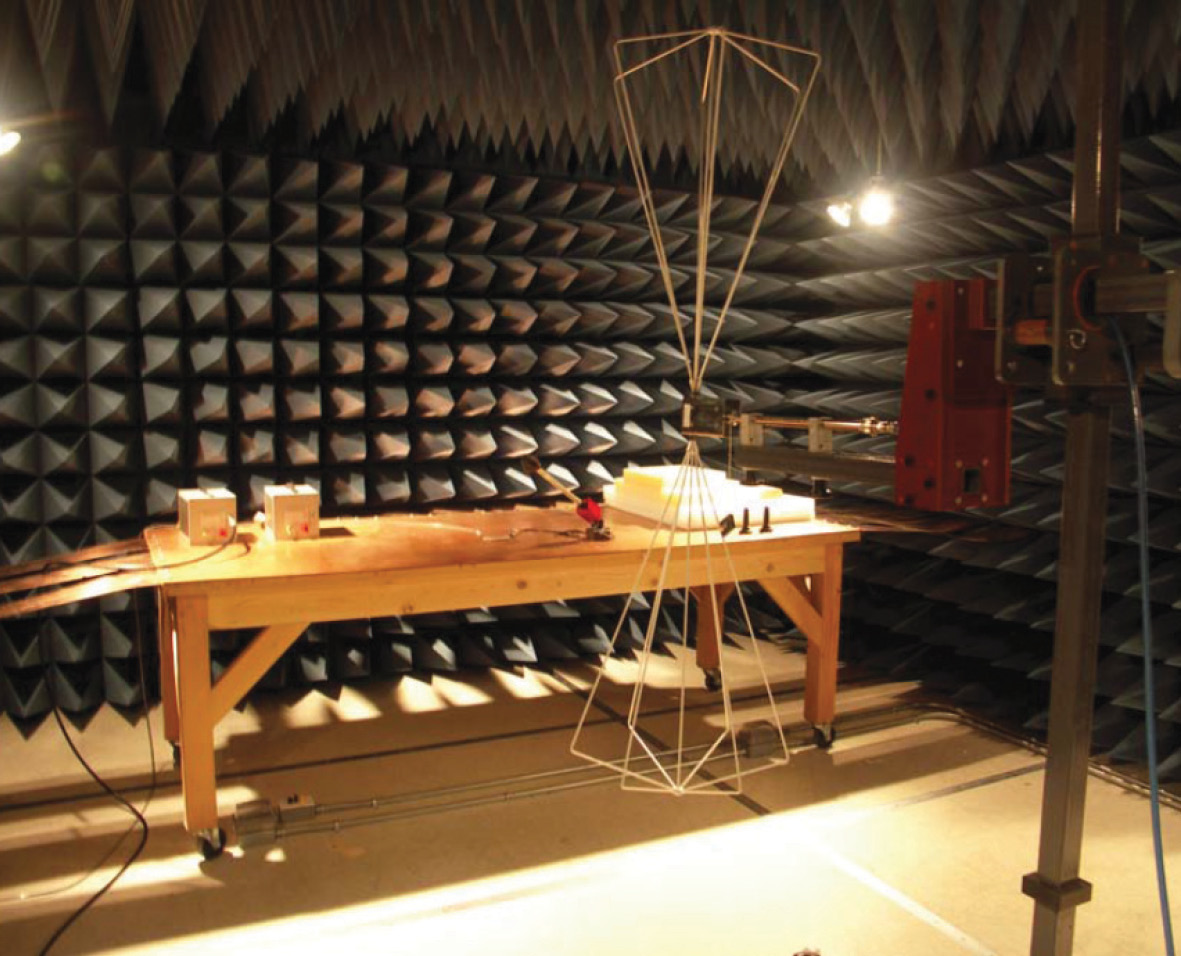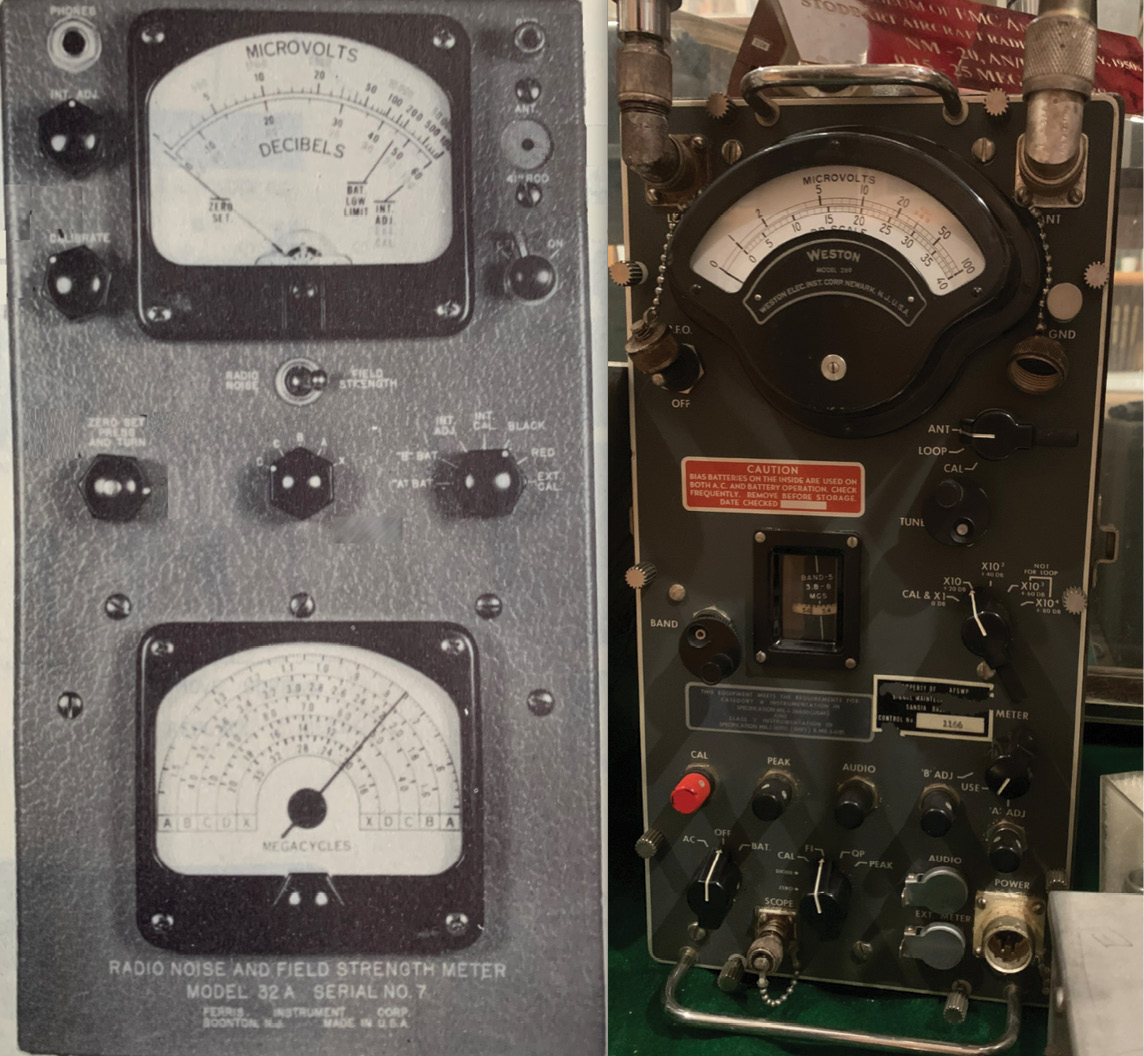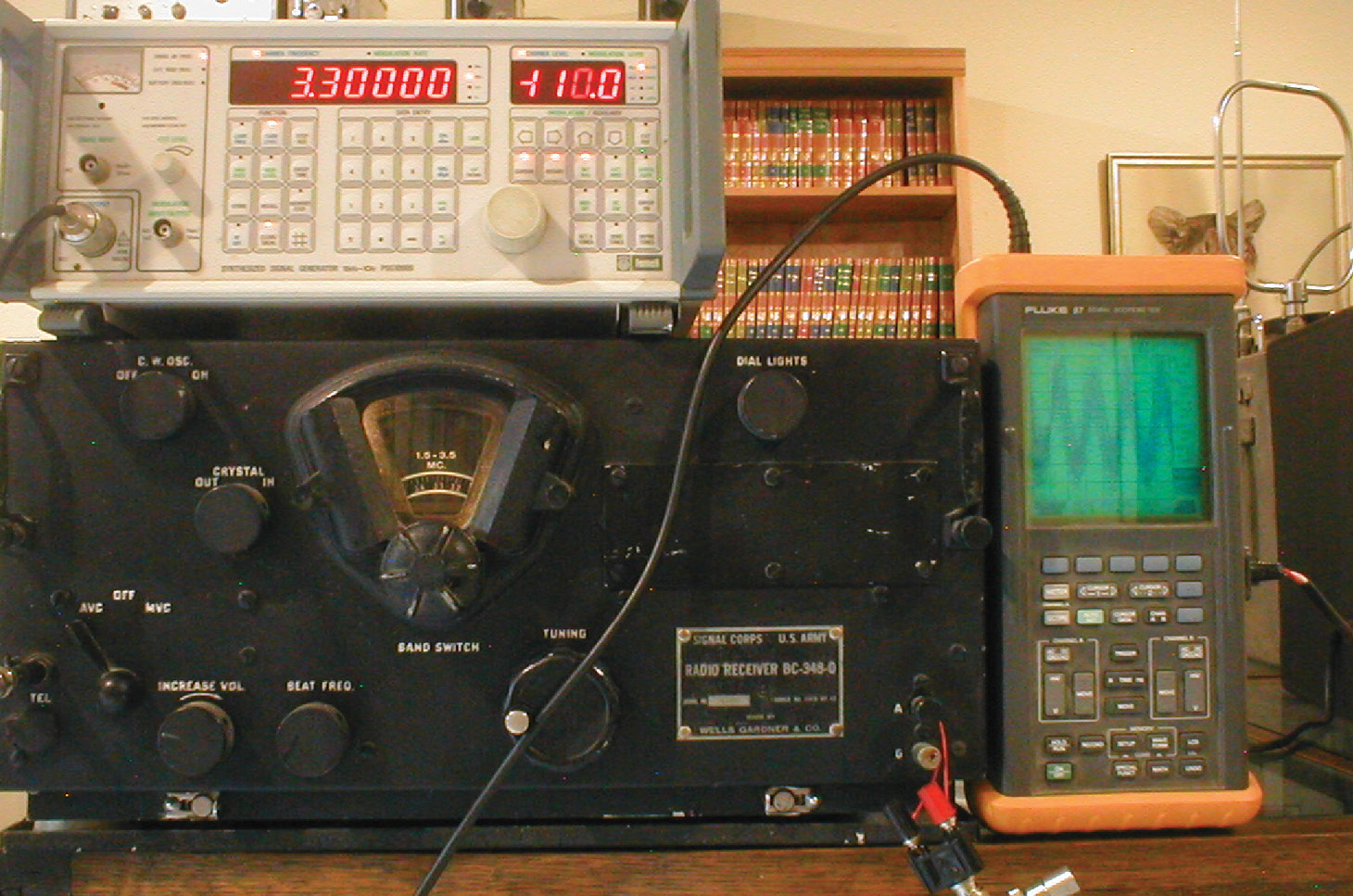in Planes, Trains, and Automobiles (and Ships and Spaceships, as well)

In each of these articles, there is a preponderance of references to various military electromagnetic interference specifications.2 This should not be interpreted as limiting the subject matter discussed to the military sector. Both aerospace and automotive EMI specifications/standards bear a strong resemblance to military EMI standards, and that resemblance has been tracked over decades as these specifications/standards evolved. That is, commercial aerospace specifications from the 1960s and 1970s look like contemporaneous military specifications, and when the automotive industry later instituted EMI qualifications, those qualifications were similar to contemporaneous military practices.
This is not to say that these industry sectors simply copied military practices. At any particular point in time, radios,3 culprit noise sources, and their installations tend to be similar, causing similar EMI issues and consequently similar EMI controls (limits and test procedures).
Vehicles of all kinds – even large ships – must countenance culprit-victim separations in the very near field. Not all antenna-culprit separations will be precisely one meter, and while one-meter measurements are not scalable as are far-field measurements, the vehicle EMC verification process takes that into account.
The subject matter in this multi-part series of articles has been limited to a length and level of detail appropriate for magazine publication. An expanded discussion of these topics will be posted on the author’s website in the near future.4 Sections with significantly expanded coverage in the website version are flagged with an asterisk (*).

Secondly, we have a rationale or white paper report detailing the engineering behind the radiated emissions portions of MIL‑I‑6181B. NADC-EL-5515 precisely documents the problem and the solutions developed, and the process between problem and solution.6 This report, authored in 1955 by William Jarva of the Naval Air Development Center, serves as a Rosetta Stone, unlocking the mystery behind the limits and test methods used to control unintentional radiated emissions. It should be required reading for anyone involved in vehicle EMC.
Prior to the end of World War II, there were no EMI specifications at all.8 Instead, there were specifications describing how to verify that integrated vehicles (planes, trains, automobiles, ships, and submarines) had sufficient EMI suppression to ensure the vehicle’s suite of radios would operate free from interference. Such EMC specifications were accompanied by quite sophisticated handbooks and suppression specifications showing proper installations of both radio and non-radio electrical equipment so as to minimize the probability of radio frequency interference. Eventually, it was determined that designing a certain amount of suppression and immunity into electrical and electronic equipment was more efficient overall than trying to solve everything during vehicle integration, and this gave birth to JAN-I-225, the first EMI specification.9

While MIL‑I‑6181B evolved from a predecessor specification, it was revolutionary in many aspects.11,12
Both of the EMI receivers shown in Figure 1 were designed for direct attachment of a 41” rod. Only the AN/PRM-1 has a (slide-back) peak‑detecting capability.13 The Ferris meter was much older, dating from 1932. According to Al Parker, the AN/PRM-1 was developed between the end of WWII and 1950.14
(The 5 uH LISN was such an important development that it gets its own separate discussion in Part 2 of this article series.)
This was the inception of narrowband-broadband discrimination and separate limits. While that is largely obsolete today, it is not without merit. The demise of separate limits in MIL‑STD‑461D in 1993 was largely based on the perception that not enough people were doing it correctly, and the procedure had to be simplified to the point where people were all doing it the same way.17 Hence, single‑bandwidth measurements are ubiquitous today. These rely on CISPR 16-1 specifying these bandwidths for all EMI receivers, and also on these bandwidths being representative of those used by the actual radios protected by emission limits.
But the failure of such simplifications is evident in cases where multiple bandwidths are in use by various radio services. For instance, dithered clocks spread clock harmonics across several measurement bandwidths, decreasing the signal measured in any one bandwidth. This is a fine design technique as long as the radio protected from such interference has a bandwidth similar to that mandated by CISPR 16‑1. But when the victim radio has a much larger bandwidth, such as broadcast television, then even the dithered clock energy falls within a single channel. So even though the dithered clock amplitude is under the limit measured with a 120 kHz bandwidth, such signals can cause TVI. If a separate bandwidth such as 1 MHz or better yet 6 MHz were used, that would tell the tale for the TV receiver.
Another question less often posed is if the installation is known to hold cables much closer to the structure than 5 cm, can the test set-up simulate that?
The closer that first cable is to the ground plane edge, the more efficiently it radiates (RE102), and the more efficiently a radiated field can couple to it (RS103) – hence the need for standardization. As illustrated in Figures 2 and 3, the separation of cables on standoffs holding them 2” (now 5 cm) above a ground plane is first found in MIL‑I‑6181B. Previously in JAN-I-225 (and thus MIL-I-6181 which relied on JAN-I-225 for test procedures) it was a quarter-inch over the ground plane. Separation between cables was also 2”, but that has decreased to 2 cm in MIL‑STD‑461. For a “seeing is believing” demonstration of the reason behind the cable-to-cable separation requirement, see https://youtu.be/uiyLQpsOqX8. Armed with this information, the reader may now make informed decisions.
These measures were taken to gradually force improvement in power-line EMI filtering. At the same time, the very stringent conducted emission limits found in MIL‑I‑6181B had to be levied to protect the existing inventory of installed radios with little or no power-line filtering. As time went by, these stringent conducted emission limits were relaxed as the inventory of obsolete susceptible receivers declined, being replaced by receivers that met the higher level conducted susceptibility limits.

- Explanatory note adapted from “EMI vs. EMC: What’s in an Acronym,” In Compliance Magazine, February 2014. Much more on the topic of how equipment EMI qualification relates to vehicle self-compatibility (EMC) demonstration may be found there.
- All specifications/standards/books/handbooks referenced in this article are available at http://www.emccompliance.com or on request from the author.
- The term “radio” as used in this article is shorthand for “antenna-connected receiver” meaning a device designed to receive information wirelessly over the airwaves. This includes voice and data radios, but also navigational aids, radar, and anything designed to connect to an antenna.
- See Reference 2
- MIL‑I‑6181B, Interference Limits, Tests and Design Requirements, Aircraft Electrical and Electronic Equipment, 29 May 1953
- NADC-EL-5515, Final Report, Evaluation of Radio Interference Pick-Up Devices and Explanation of the Methods and Limits of Specification No. MIL‑I‑6181B, 10 August 1955
- Much of the historical content was sifted from the author’s earlier handbook, namely, “Introduction to the Control of Electromagnetic Interference,” EMC Compliance, 1993.
- For a detailed explanation of the difference between a specification or standard controlling electromagnetic interference vs. one controlling electromagnetic compatibility, see “EMI vs. EMC, What’s in an Acronym,” in the February 2014 issue of this magazine.
- JAN-I-225, Interference Measurement, Radio, Methods Of, 150 Kilocycles to 20 Megacycle (For Components and Complete Assemblies, 14 June 1945
- Insight into the times just prior to the adoption of MIL‑STD‑461 and -462 is found at White, Donald R. J. “A Handbook on Methods and Procedures for Automating RFI/EMI Measurements,” White Electromagnetics, Inc. Rockville, MD, 1966. White was a pillar of the EMC community at a time when he was about the only pillar.
- The reader may well ask what happened to MIL‑I-6181A. It was released 23 January 1953, just four months prior to “B.” The author has never found a copy, which is not surprising given the short lifespan. Some of the changes in “B” vs. the original release of MIL-I-6181 may have appeared in “A,” but there is no way to know for sure. One may infer from the release of “B” four months after “A” that the “B” revision was quite comprehensive in scope, and further, we know from NADC-EL-5515 that the radiated emission portion was new for “B.”
- MIL-I-6181, Interference Limits and Tests: Aircraft Electrical and Electronic Equipment, 14 June 1950
- Functionally, a slide-back peak detector may be thought of as a comparator circuit. One input is the detected (demodulated) signal envelope, and the other is a dc level derived from a potentiometer. The potentiometer is adjusted until the dc input to the comparator is at precisely the same level as the peak of the demodulated pulse train. At that point, no audio can be detected, and the dc level drives the meter deflection. In this way, peak detection is entirely independent of pulse repetition rate and duty cycle.
- Parker, A. T. “A Brief History of EMI Specifications,” presented at the 1992 IEEE EMC Symposium.
- 12R2-3BC-112, Technical Order, Maintenance Instructions, Radio Receivers BC-224 & BC-348, 20 July 1945. Section IV, Theory of Operation, paragraph 3b, gives bandwidth information.
- Instruction Book, Radio Noise and Field Strength Meter Ferris Model 32-B, Ferris Instrument Company, Boonton, NJ undated but no earlier than 1947. General Theory and Description section D Frequency Range, page 4.
- The proper way to do it in the age of semi-automated receivers (for MIL‑STD‑461 prior to “D”) is well described in an application note on the topic authored by Mr. John Zentner, retired from Wright Patterson Air Force Base. Mr. Zentner was the guiding technical force behind much of what became MIL‑STD‑461D and -462D. See ASD/ENA-TR-80, Identification of Broadband and Narrowband Emissions, 01 May 1980.
- MIL-STD-462, Electromagnetic Interference Characteristics, Measurement of, 31 July 1967, and MIL‑STD‑462D, Measurement of Electromagnetic Interference Characteristics, 11 January 1993. A little remarked but quite significant change between these two successive standards (no B or C releases) is that the original requires “all leads and cables shall be within 10 +/- 2 cm from the edge of the ground plane…” The “D” revision requires just the opposite: “… the cable closest to the front boundary shall be placed 10 centimeters from the front edge of the ground plane.” The original release acts to maximize radiated emissions and susceptibility, while the “D” revision acts to put an upper bound on both.
- See Reference 9.
- See Reference 12.
- For mains frequencies (60 & 400 Hz), a 500 Ω resistor was inserted between the mains source and the filament transformer. At other frequencies, the HP 205A audio oscillator could be configured with a suitable output and a 500 Ω output impedance: Hewlett-Packard Operating and Service Manual, Audio Signal Generator Models 205A and 205AG, copyright 1955.







